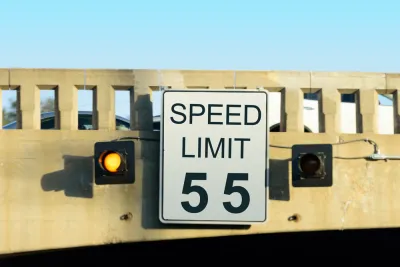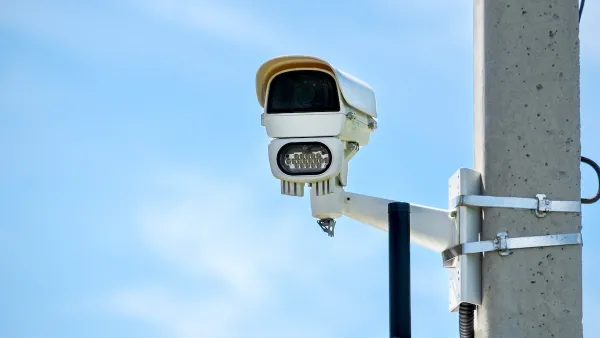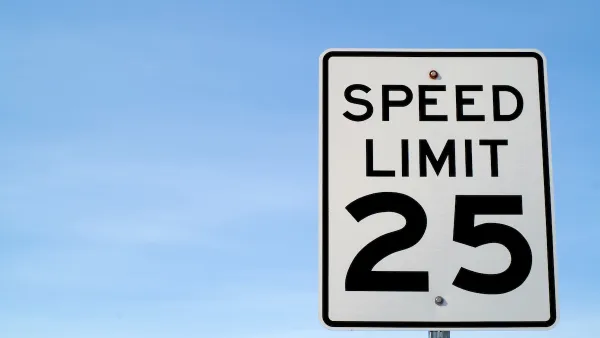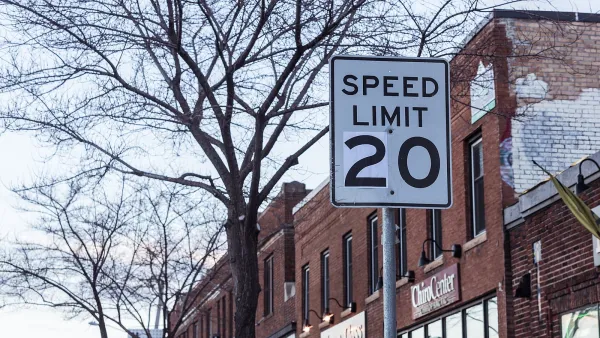While most Americans agree that speeding is a threat to public safety, dysfunctional laws and inadequate enforcement perpetuate a culture of tacitly sanctioned high-speed driving.

"In the first six months of 2021, projected traffic fatalities in the U.S. rose by 18 percent, the largest increase since the U.S. Department of Transportation started counting and double the rate of the previous year’s surge." As Henry Grabar writes in a piece detailing the history of the speed limit in the U.S., this can be attributed in part to more speeding induced by empty roads during the pandemic. Yet Americans continue to speed nonchalantly: half of drivers surveyed said they've gone more than 15 miles over the speed limit in the past month.
The nation’s most disobeyed law is dysfunctional from top to bottom. The speed limit is alternately too low on interstate highways, giving police discretion to make stops at will, and too high on local roads, creating carnage on neighborhood streets. Enforcement is both inadequate and punitive.
While the data on whether speed causes more crashes shows conflicting results, it is clear that crashes that do occur at higher speeds cause more severe injuries.
One solution, according to Grabar, is automated speed cameras. New York City, which installed a network of 750 cameras near city schools, saw a 72 percent reduction in speeding. But the concept is controversial to some civil rights advocates who say the cameras still target communities of color unfairly. Meanwhile, others argue that cameras provide a safer enforcement option than physical encounters with police, which can turn deadly.
Grabar suggests three changes that could make American roads safer: replace rural intersections with roundabouts, narrow city streets, and implement other traffic calming measures; improve driver education; and regulate speed through technology in vehicles themselves, a tactic gaining ground in Europe.
FULL STORY: The American Addiction to Speeding

National Parks Layoffs Will Cause Communities to Lose Billions
Thousands of essential park workers were laid off this week, just before the busy spring break season.

Retro-silient?: America’s First “Eco-burb,” The Woodlands Turns 50
A master-planned community north of Houston offers lessons on green infrastructure and resilient design, but falls short of its founder’s lofty affordability and walkability goals.

Delivering for America Plan Will Downgrade Mail Service in at Least 49.5 Percent of Zip Codes
Republican and Democrat lawmakers criticize the plan for its disproportionate negative impact on rural communities.

Test News Post 1
This is a summary

Test News Headline 46
Test for the image on the front page.

Balancing Bombs and Butterflies: How the National Guard Protects a Rare Species
The National Guard at Fort Indiantown Gap uses GIS technology and land management strategies to balance military training with conservation efforts, ensuring the survival of the rare eastern regal fritillary butterfly.
Urban Design for Planners 1: Software Tools
This six-course series explores essential urban design concepts using open source software and equips planners with the tools they need to participate fully in the urban design process.
Planning for Universal Design
Learn the tools for implementing Universal Design in planning regulations.
EMC Planning Group, Inc.
Planetizen
Planetizen
Mpact (formerly Rail~Volution)
Great Falls Development Authority, Inc.
HUDs Office of Policy Development and Research
NYU Wagner Graduate School of Public Service





























